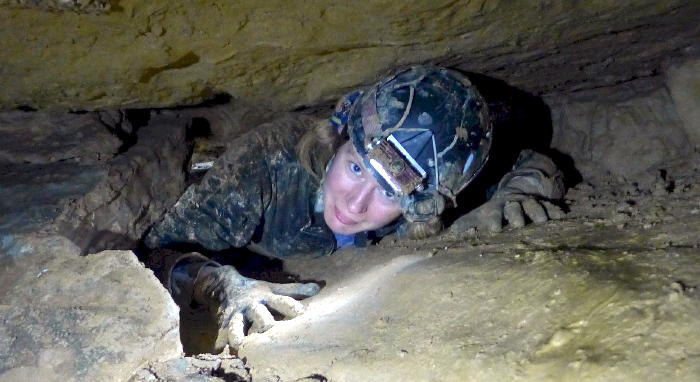 May 8, 2018
May 8, 2018
Johanna Kovarik, U.S.Forest Service, National Cave and Karst Program Coordinator
Topic – A Life Underground: Studying and Stewarding the Magical Subterranean World of Caves
Caves and karst landscapes are rich in resources, including the largest springs around the world and the most productive groundwater on Earth. Caves and karst provide a unique subsurface habitat for rare animals. Caves preserve fragile archaeological and paleontological materials for millennia. Throughout history people have used caves for many purposes, from tourism to farming to protection. A growing number of scientists are heading underground to study what caves can offer us as a record of our planet’s past conditions, a home for some of the most fascinating microbes, and in many places the source of our water. It all begins with mapping these caves – the true exploration of these subsurface ecosystems. Learn more about how caves form, how they impact our everyday lives, and travel around the subterranean world with Johanna Kovarik through images and stories of these fantastic places.
Speaker Bio
Johanna Kovarik has been studying and working in caves since she got her first job with the National Park Service in Carlsbad Caverns, New Mexico in 2003. She went on to earn her Masters in Geoscience from Western Kentucky University, and her Ph.D. from the School of Geosciences at the University of South Florida. Her research work is primarily in land use and watershed dynamics, groundwater vulnerability, human disturbance, and natural resource management. In 2014 Johanna was made a Fellow of the National Speleological Society, and she has led and participated in grant-funded cave expeditions around the world as a geoscientist, cave surveyor, and cartographer. She has served for the past six years as the National Cave and Karst Program Lead for the U.S. Forest Service, moving into this role from her work as a geologist and hydrologist on the Tongass National Forest in southeast Alaska from 2004 to 2011. She has also led the National Groundwater Program and managed the GeoCorps internship program for the agency. From 2010 to 2015 she led a multi-faceted project in southern Mexico with the Forest Service’s Office of International Programs, and in 2015 she was awarded the National Rise to the Future: Friend of Fish and Watershed Award from the U.S. Forest Service for her national and international work with karst watersheds. Her latest project was creating and producing an educational program called CavesLIVE on caves and karst, with a 40 minute pre-taped program and a LIVE Q&A program streamed from Blanchard Springs Caverns in Virginia this past March. To learn more, visit www.CavesLIVE.org.